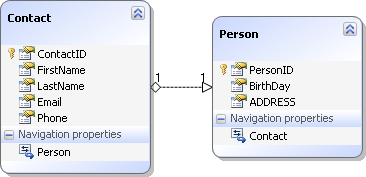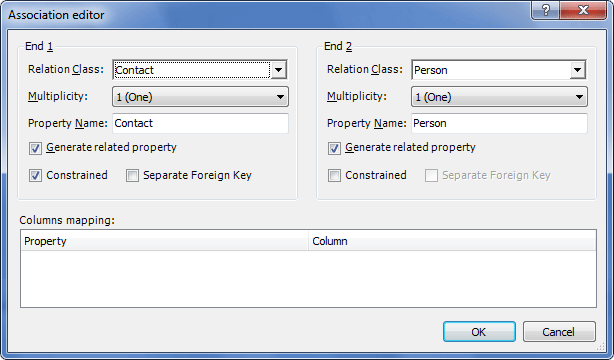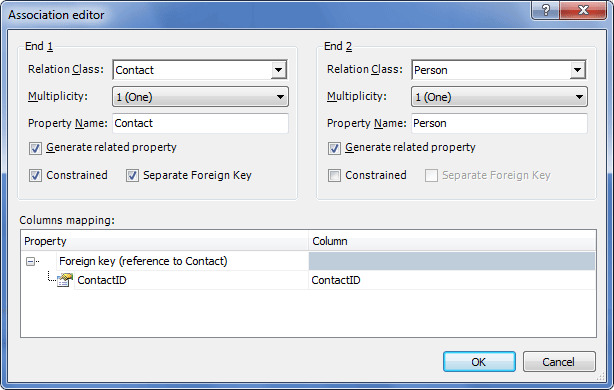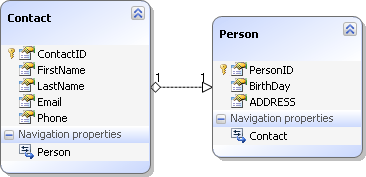One-to-one associations are the simplest kind of associations. They usually correspond to the foreign key relations when the foreign key column is the primary key column.
The following two cases are possible, when we map a one-to-one association.
Case 1. When the foreign key and the primary key in the dependent entity class (class, corresponding to the table that has the foreign key) consist of the same columns.
The database contains the Person and Contact tables, between which there is a foreign key created against the primary key fields of these tables.

We perform the following sequence of operations:
| • | create an NHibernate model; |
| • | add the Person and Contact tables to the model. |
As a result, we have the following model:

The association between the Person and the Contact entities looks as follows:

Case 2. When the foreign key is some non-primary unique property. You have to specify the foreign key column of the constrained table in this case.
The database contains the Person and Contact tables, between which there is a foreign key that is created against the ContactID primary key field of the Contact table and the ContactID unique field of the Person table.

We perform the following sequence of operations:
| • | create an NHibernate model; |
| • | add the Person and Contact tables to the model; |
| • | display the Association Editor dialog and set the Separate Foreign Key parameter of the Contact property to True as well as set the Foreign Key column to the ContactID column. |
The association between the Person and the Contact entities looks as follows:

As a result, we have the following model:
